You probably know that pronouns replace nouns in a sentence so you don’t end up repeating the same words over and over like some sort of robot.
The English language has a whole cast of different types of pronouns doing very specific jobs.
Relative pronouns are one of the types that link parts of a sentence together and add detail without starting a new sentence every time.
Read along to learn what is a relative pronoun, how it is used in a sentence, how to differentiate it from other similar types of pronouns, and a lot more!
Key Takeaways
- A relative pronoun, like who, whom, whose, which, and that, connects clauses by referring back to a noun.
- There are two main types of relative clauses: defining (restrictive) and non-defining (non-restrictive).
- Adding or removing commas around a relative clause can completely change a sentence’s meaning.
- Don’t confuse relative pronouns with demonstrative pronouns that point to something (this, that, these, those) or interrogative pronouns used to ask questions (who, what, which as question words).
- Use Undetectable AI Chat and Ask AI to practice the accurate use of relative pronouns with personalized examples and instant feedback.
What Is a Relative Pronoun?
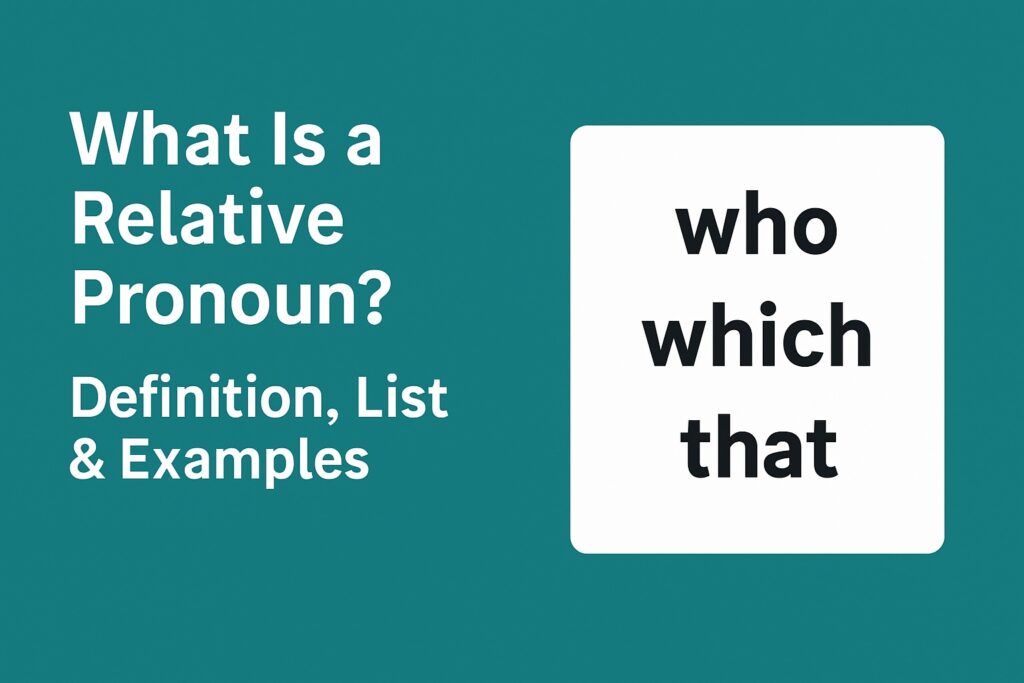
A relative pronoun is a connector.
Its job is to hook one part of a sentence to another by referring back to a noun that’s already been mentioned.
It relates extra information to a person, place, thing, or idea without starting a brand new sentence
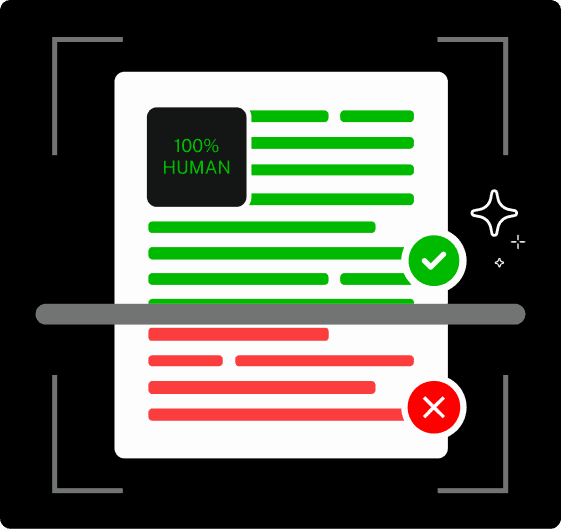
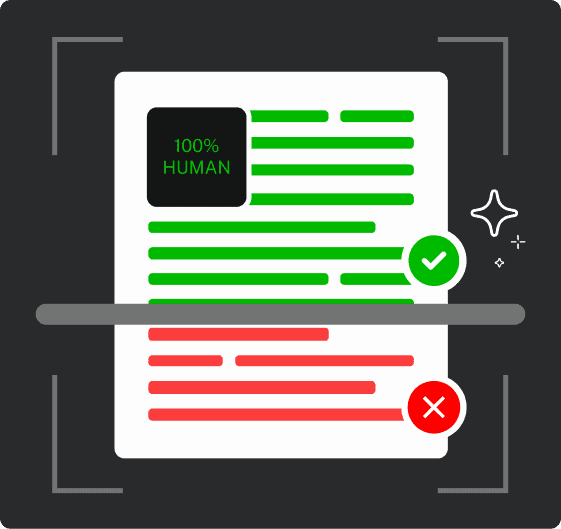
Never Worry About AI Detecting Your Texts Again. Undetectable AI Can Help You:
- Make your AI assisted writing appear human-like.
- Bypass all major AI detection tools with just one click.
- Use AI safely and confidently in school and work.
It sits at the start of something called a relative clause, which is just a fancy name for a part of a sentence that describes or gives more information about a noun.
So, rather than stacking up short, choppy sentences, relative pronouns let you form more layered sentences.
Historically, relative pronouns have been around for centuries, but Old English didn’t use them the way we do now.
Back then, people relied more on word order and repetition.
As English absorbed Latin and French influences, the language got more complex, and the grammar had to keep up.
Relative pronouns grew out of that shift, where they offered a way to express subtler relationships between ideas.
List of Common Relative Pronouns
If you’re going to understand what’s a relative pronoun, you need to know which ones you will commonly come across.
Here’s a list of the most common relative pronouns:
- Who: It refers to people and is used when the person you’re talking about is the one doing the action in the clause.
- Whom: It also refers to people, but is used when the person is on the receiving end of the action, so it appears in object position. Whom is more common in formal or written English than in everyday speech.
- Whose: This relative pronoun shows ownership. It connects a person, animal, or thing to something they possess or are related to. It’s the only relative pronoun that expresses possession and can be used for both people and objects.
- Which: It refers to animals or objects, and sometimes abstract ideas. It’s used when you want to provide more information about something already mentioned. Unlike who or whom, it doesn’t apply to people.
- That: It replaces who or which in more casual writing. It’s commonly used when you want to specify or narrow down exactly what you’re talking about, without sounding overly formal.
In addition, ‘when, where, why’ aren’t technically on the classic relative pronoun list, but they play the same game.
When connects to time, where to place, why to reason.
And if you’re putting together a school assignment while trying to wrap your head around which pronoun goes where, check out Undetectable Ask AI.
It gives you fast, clear answers to your confusion around the use of relative pronouns without making you dig through pages of dry grammar explanations.
You can also copy-paste your own writing and get instant feedback on your sentence structure.
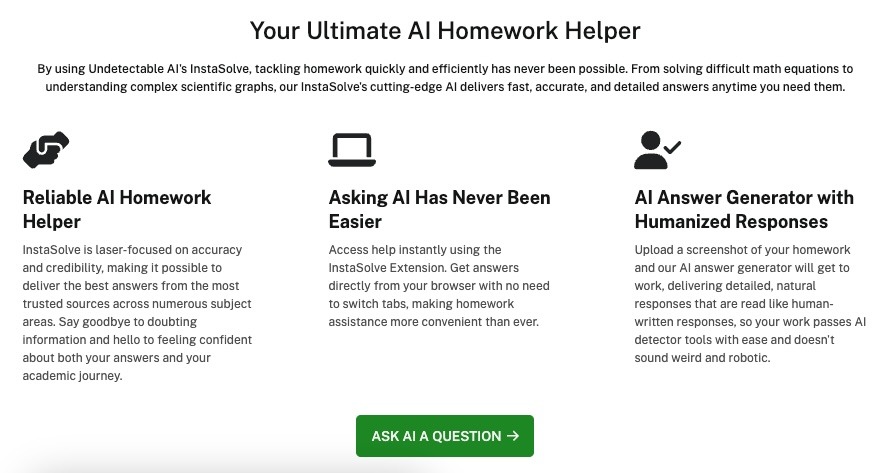
Types of Relative Clauses
Now that you know what relative pronouns are and how they help connect extra information to nouns, let’s try to understand how they are used in sentences.
You will see them in two ways: the defining clause and the non-defining clause.
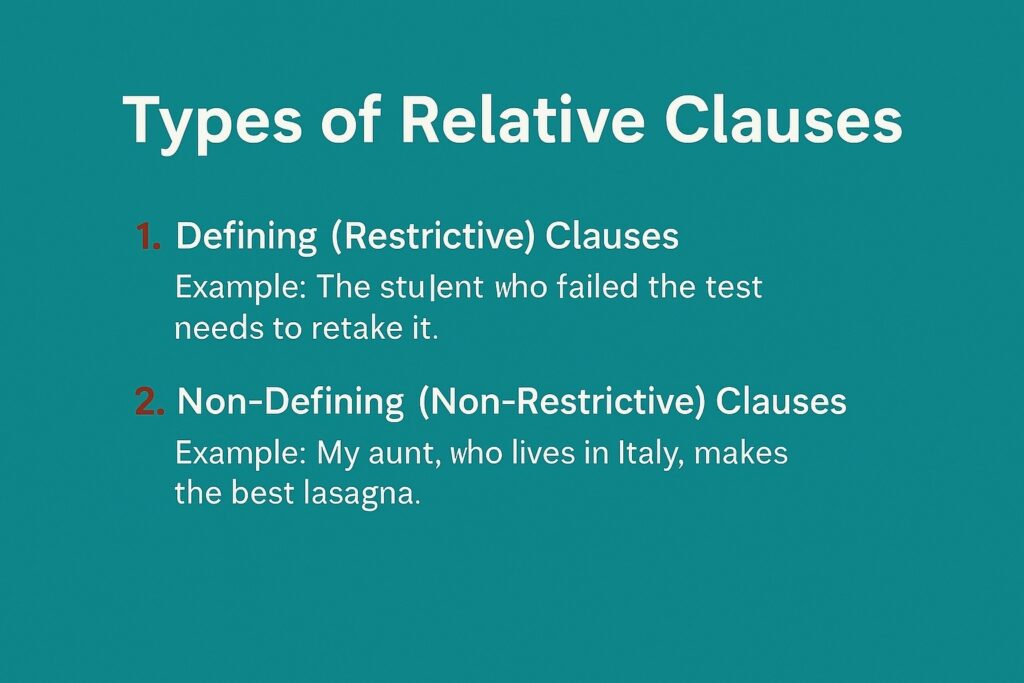
Defining (Restrictive) Clauses
Defining clauses lock down which person or thing you’re talking about. They’re called “restrictive” because they restrict or narrow the meaning of the noun.
Take this sentence, for example:
“The student who failed the test needs to retake it.”
Here, the clause “who failed the test” tells us which student we’re talking about. There may be 30 students, but you’re not talking about all of them, just the one who bombed the test.
Also, in defining clauses, we often use “that” instead of “which” when talking about things. It’s cleaner and more accepted in formal writing.
Non-Defining (Non-Restrictive) Clauses
Non-defining clauses are the little asides you could technically remove without breaking the sentence. The sentence still makes sense without them. You’re just tossing in a bit of extra info when you use them.
For example, “My aunt, who lives in Italy, makes the best lasagna.” Or, “My uncle, who used to be a pilot, now runs a coffee shop.”
In both of these sentences, the clause between the commas isn’t really necessary for the sentence to make sense. Instead, it just adds more meaning and context.
Non-defining clauses only use who, whom, whose, and which as relative pronouns. You do not use ‘that’, in particular.
How Punctuation Changes Meaning
The only difference between defining and non-defining clauses, grammatically speaking, is the presence of commas.
That little change can completely flip what the sentence is saying.
Let’s compare two almost identical sentences:
- “The guests who arrived late missed dinner.”
This sentence only talks about the latecomers. It implies that some guests were on time, and some were not. Only the ones who strolled in late were punished with an empty plate.
- “The guests, who arrived late, missed dinner.”
We added commas, and now it sounds like all the guests were late and everyone missed dinner.
The clause “who arrived late” is no longer narrowing down which guests you’re referring to, it’s just throwing in extra info about all the guests.
Relative Pronouns in Complex Sentences
A complex sentence is just a sentence that combines an independent clause (a complete thought that can stand alone) with one or more dependent clauses (incomplete thoughts that need backup).
The dependent clauses usually start with words like “because,” “although,” “if,” “or,” or, you guessed it, relative pronouns.
Relative pronouns introduce relative clauses, which are a kind of dependent clause.
That means any sentence using them is, by nature, a complex sentence.
Let’s look at an example.
“The professor who gave the guest lecture on quantum computing last night has published a book.”
If I break it down, then:
- Our main clause is: ‘The professor has published a book.’
- The relative clause is: ‘who gave the guest lecture on quantum computing last night’
- The relative pronoun used is: ‘who’
Similarly, here’s an example of a non-living thing.
“I finally replaced the old coffee machine, which had been leaking mysteriously and short-circuiting the kitchen outlet every other week.”
- The main clause is: ‘I finally replaced the old coffee machine.’
- The relative clause is: ‘which had been leaking mysteriously and short-circuiting the kitchen outlet every other week’
- The relative pronoun used is: ‘which’
Relative Pronouns vs. Other Pronouns
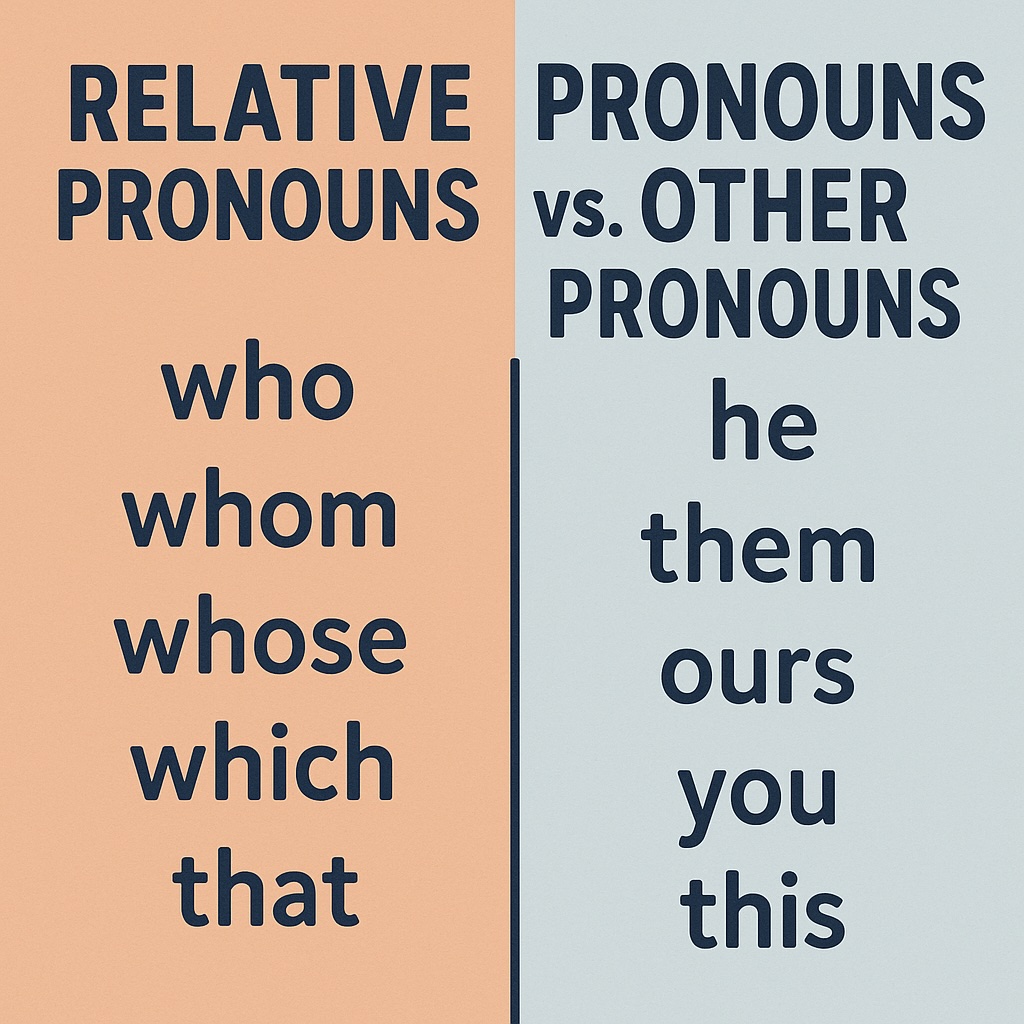
Relative pronouns are often confused with demonstrative and interrogative pronouns.
Here’s how to differentiate between them.
Difference Between Relative and Demonstrative Pronouns
We’ve discussed in great detail how relative pronouns are connectors, and grammatically, they introduce dependent (subordinate) clauses that describe or define a noun mentioned earlier.
Demonstrative pronouns don’t connect clauses.
They stand in place of nouns and point to something specific, either in physical space or in context.
You will usually see them as part of simple sentence structures and as the subject or object of the sentence.
For instance:
“That was the most powerful documentary I’ve seen on climate change in years.”
The pronoun ‘that’ doesn’t introduce a clause here. It stands on its own and refers to something already known, probably the documentary that the speaker and listener both just watched or talked about.
In short:
- Relative pronouns show up after a noun and introduce a clause that describes the noun.
- Demonstrative pronouns act as nouns themselves and don’t follow another noun.
Relative vs. Interrogative Pronouns
The difference between relative and interrogative pronouns often trips people up because many pronouns, e.g., who, whom, which, and what, all appear in both categories.
But again, the difference lies in what they do in a sentence.
Relative pronouns, like before, introduce dependent clauses that describe a noun.
Interrogative pronouns, on the other hand, are used to ask questions.
They stand in for the noun you’re asking about and open a sentence, not follow a noun like relative pronouns do.
For example, “Who stayed with the patient overnight in the ICU?”
The interrogative pronoun ‘who’ is the subject of a question.
Again, to summarize:
- If the pronoun connects a clause to describe something, it’s relative.
- If it asks for information, it’s interrogative.
Pronoun Chart: Function and Examples
Let’s put the different types of pronouns discussed here all in one place so you can actually compare without flipping through grammar books.
| Pronoun | Type | Function | Example |
| who | Relative/Interrogative | Connects to a person / Asks about a person | “The boy who lost his keys…” / “Who lost their keys?” |
| whom | Relative/Interrogative | Object form of who | “The actor whom we met…” / “Whom did you meet?” |
| whose | Relative/Interrogative | Shows possession | “The girl whose dog ran away…” / “Whose dog ran away?” |
| which | Relative/Interrogative | Refers to things or choices | “The car, which is red…” / “Which car is red?” |
| that | Relative/Demonstrative | Connects to essential info / Points at something | “The rule that applies here…” / “That is mine.” |
| this/these/that/those | Demonstrative | Point to specific nouns | “These are expired.” |
To really sharpen your instinct for which pronoun to use where, I really recommend using Undetectable AI Chat.
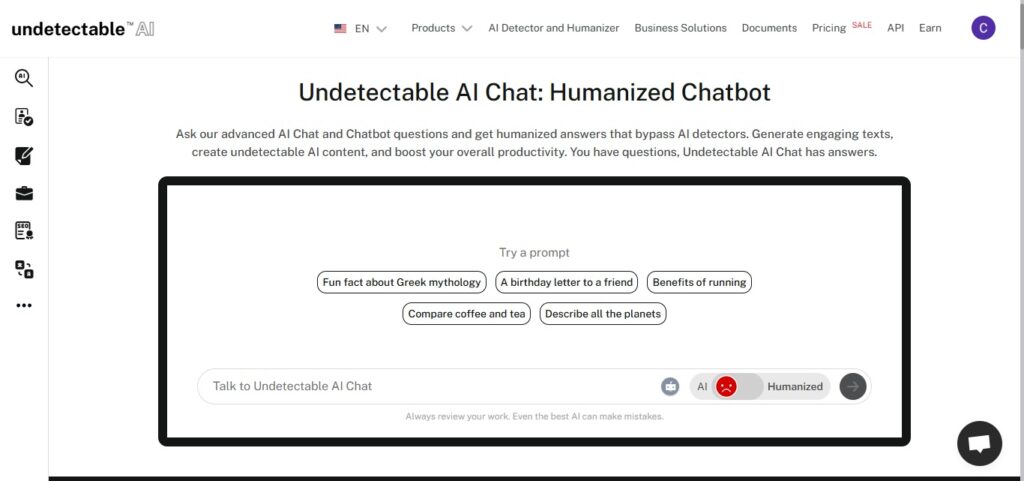
You can actually run drills specifically on relative clauses or pronoun choice and get detailed feedback.
It’s way more effective than scrolling through passive worksheets because you’ll get a feel for how these pronouns actually function in live language.
Experience the power of our AI Detector and Humanizer in the widget below!
FAQs About Relative Pronouns
Is “That” Always a Relative Pronoun?
No. That is a relative pronoun when it introduces a clause describing a noun, but it can also be a demonstrative pronoun when pointing to something.
When Can I Omit a Relative Pronoun?
You can omit a relative pronoun when it functions as the object of the clause, not the subject. For example, “The book (that) I borrowed was great.”
What’s the Difference Between “Who” and “Whom”?
Who is used as the subject of a verb and it performs the action. Whom is used as the object, so it receives the action. Here’s an example of the use cases of both: “Who called you?” vs. “Whom did you call?”
Can a Sentence Have Multiple Relative Clauses?
Yes. A sentence can include more than one relative clause if you’re giving information about different nouns. Just be sure each clause is clear and doesn’t confuse the reader.
For instance, “The scientist who led the study and the assistant who gathered the data both presented their findings at the conference.”
Final Thoughts
Relative pronouns help you stitch sentences together and add clarity without needing a full rewrite.
By now, you should have a solid grip on what is relative pronoun, the list of commonly used ones, and when to use them.
If you want to get even better at spotting and using relative pronouns in the wild, practice them using Undetectable AI Chat or Ask AI.
Get started with Undetectable AI today!
